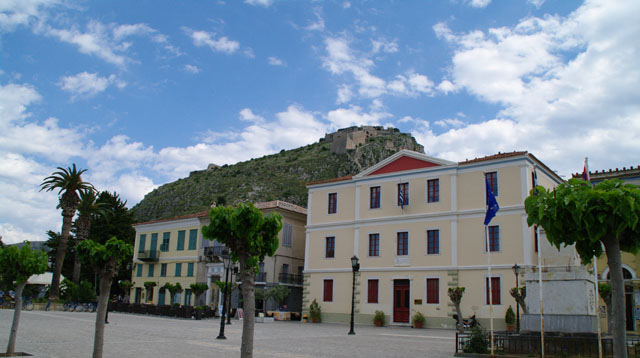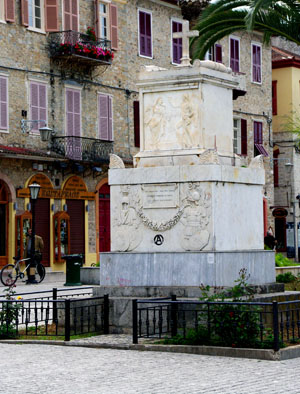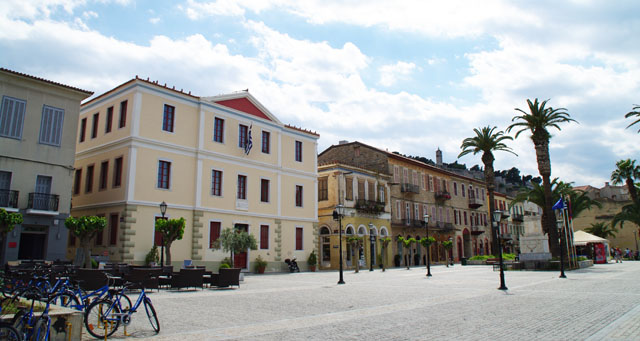The Three Admirals’ Square
 |
||
| Trion Navarchon Square, the Square of the Three Admirals, is dedicated to the memory of the admirals: Kodrington of England; Derigny of France and Hayden of Russia, who fought the Turko-Egyptian fleet in the sea battle of Navarone on the 8th October 1827.
The square was constructed in the time of the governor of Greece, Ioannis Kapodistrias, by the civil engineer Stamatis Voulgaris, and includes many interesting buildings and monuments. |
||
| In the middle of the square is the funeral monument containing the remains of Dimitrios Ypsilandis, one of the leaders of the Greek revolution. Ypsilandis, who died as the result of a chronic hereditary illness at the age of 40, was originally buried in the narthex of the church of Aghios Georgios. However, in 1843 the remains were re-buried, during an official ceremony, in this monument, which was created in Vienna, following a commission by his brother, Georgios Ypsilandis.
There are many splendid neo-classical buildings in the square, among which the building which today houses the town hall stands out. Next to this, at 32 Vasileos Konstadinou Street, is the pharmacy which belonged to the Italian Philhellene, Bonifatsio Bonafin, who embalmed the body of the murdered governor, Ioannis Kopadistrias. |
 |
|
|
Behind the monument to Ypsilandis, in the western section of the square, one can see the statue of the first king of Greece, Otto, the second son of Ludwig I of Bavaria. The young king arrived in Nauplion on 25th January 1833, and remained in the city for a short while until 1834. |
||
| More or less on the site where the statue of Otto now stands, between Vasileos Konstadinou and Amalia's Street, there was once one of the most important buildings in Nauplion, the Governor's Mansion, otherwise known as 'the Palataki', or 'little palace' which was destroyed by fire in 1929. The Governor's Mansion was built in 1829, exactly 100 years before it was destroyed. It was designed by the Italian architect, Pasquale Ippoliti, for the offices of the then newly-formed government and the residence of the first governor of Greece, Ioannis Kapodistrias.
The construction was paid for by the governor himself, with some help from donations from Greek expatriates. Both its exterior and interior had an air of austerity. It was a neo-classical building with emphasis on the horizontal axis. The interior was noticeable for the sparseness of furnishings, following instructions from the governor himself. |
 |
|
|
When Kapodistrias was murdered, it was here, in the central hall, that the embalmed body was placed for public viewing. When the young king Otto came to Nauplion, he also resided in the Governor's Mansion. It was then re-named the 'Royal Palace'; but to the ordinary people it was the 'Palataki', or little palace; the name by which it is still known today. |
||
 |
||
|
The exact location of the Three Admiral's Square can be found in Section Map. |
||


